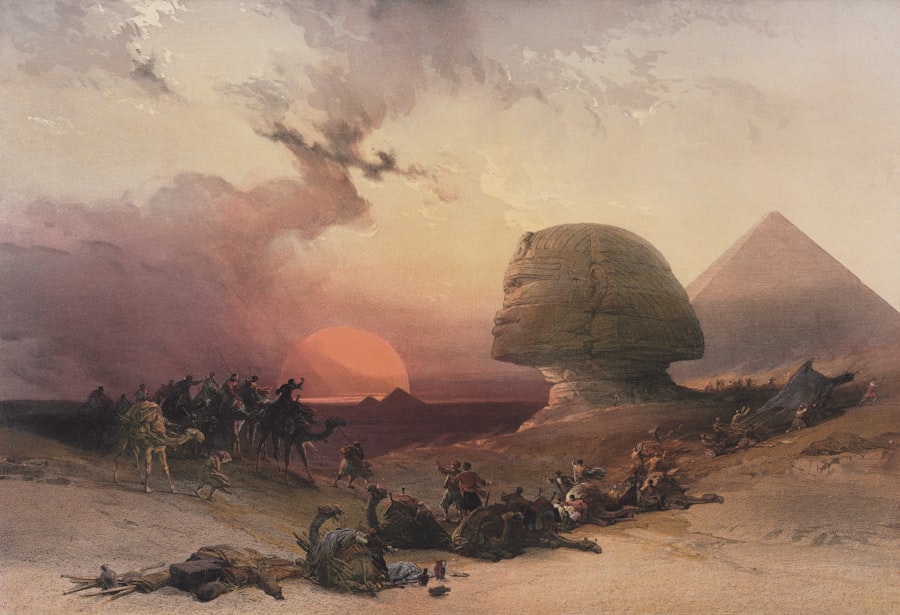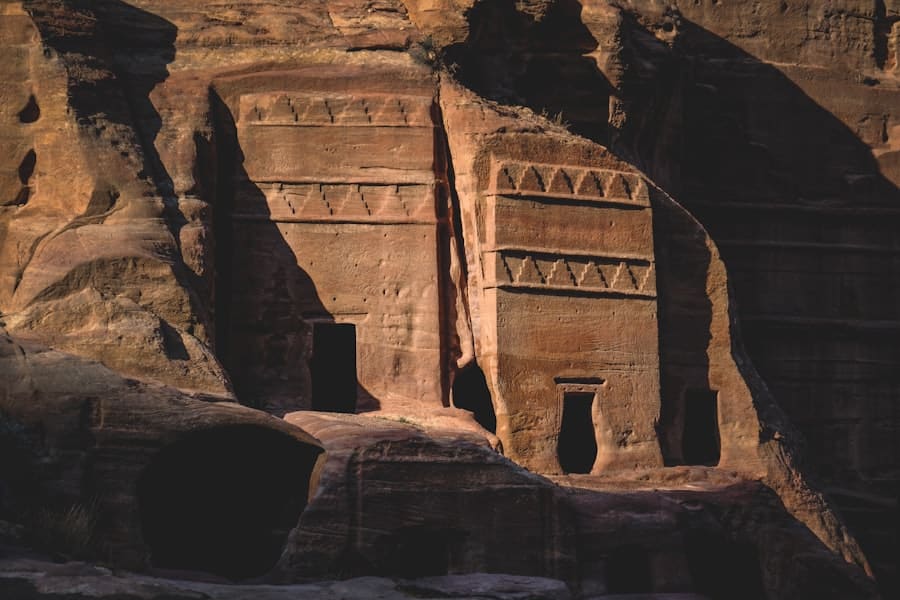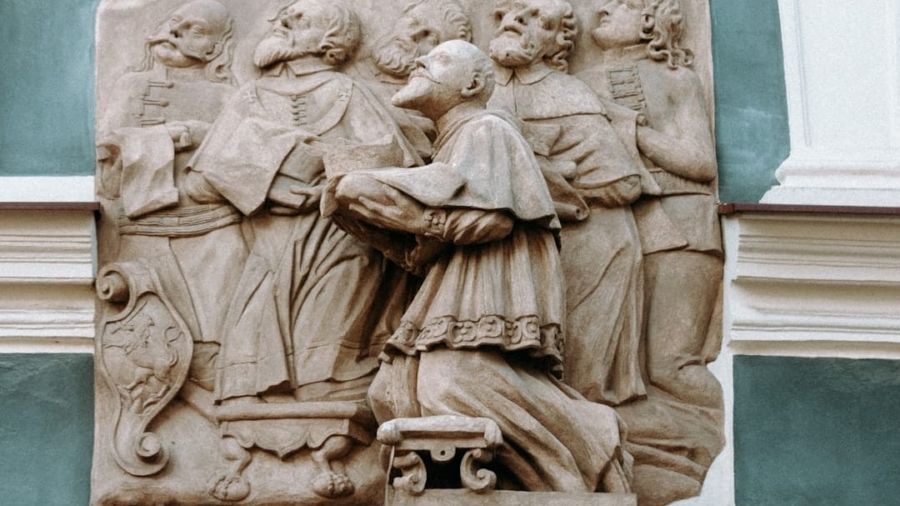Augmented Reality (AR) and Virtual Reality (VR) have emerged as transformative technologies in various fields, including education, entertainment, and healthcare. However, their application in historical reconstructions is particularly noteworthy, as they offer innovative ways to engage with the past. By blending digital elements with the physical world or creating entirely immersive environments, AR and VR allow users to experience history in a manner that traditional methods cannot replicate.
The integration of AR and VR into historical reconstructions is not merely a trend; it represents a paradigm shift in how we understand and interact with history. These technologies enable users to visualize historical events, explore ancient civilizations, and interact with artifacts in ways that were previously unimaginable.
For instance, through VR, one can walk through a digitally reconstructed ancient city, while AR can overlay historical information onto real-world locations. This immersive experience fosters a deeper connection to the past, allowing individuals to grasp the complexities of historical events and the lives of those who lived them.
Key Takeaways
- AR and VR technology are revolutionizing the way historical reconstructions are presented and experienced.
- AR and VR play a crucial role in preserving and presenting history by providing immersive and interactive experiences.
- These technologies bring ancient sites and artifacts to life, allowing people to experience history in a way that was never possible before.
- AR and VR have a significant impact on historical education and tourism, enhancing the learning and visiting experiences.
- Despite their potential, there are challenges and limitations in using AR and VR for historical reconstructions, such as accessibility and authenticity concerns.
The Role of AR and VR in Preserving and Presenting History
AR and VR play a crucial role in the preservation and presentation of history by providing tools that enhance our understanding of cultural heritage. Traditional methods of preserving history often rely on static displays in museums or textbooks that can only convey so much information. In contrast, AR and VR can create dynamic experiences that bring history to life.
For example, AR applications can allow users to point their devices at historical landmarks and receive real-time information about their significance, architectural details, and the events that took place there. This interactive approach not only educates but also encourages exploration and curiosity. Moreover, VR can transport users to different time periods, allowing them to witness historical events as if they were present.
This immersive experience can evoke emotional responses that deepen one’s appreciation for history. For instance, a VR simulation of the signing of the Declaration of Independence could place users in the midst of the event, surrounded by the Founding Fathers as they debate and discuss the future of a nation. Such experiences can foster empathy and understanding, bridging the gap between past and present.
Using AR and VR to Bring Ancient Sites and Artifacts to Life

The potential of AR and VR in bringing ancient sites and artifacts to life is vast. These technologies can reconstruct lost or damaged sites, allowing users to explore them as they once were. For example, the ancient city of Pompeii, buried under volcanic ash for centuries, has been partially reconstructed using VR technology.
Visitors can don VR headsets to walk through the streets of Pompeii, witnessing its vibrant life before the eruption of Mount Vesuvius. This not only provides an educational experience but also allows for a deeper emotional connection to the site’s tragic history. In addition to site reconstructions, AR can enhance the experience of viewing artifacts in museums.
Imagine standing before an ancient Greek vase; with an AR application on your smartphone or tablet, you could see a 3D animation depicting its use in daily life or its role in rituals. This contextualization enriches the viewer’s understanding and appreciation of the artifact, transforming a simple viewing into an engaging narrative experience. By merging digital content with physical objects, AR breathes new life into static displays.
The Impact of AR and VR on Historical Education and Tourism
The impact of AR and VR on historical education is profound. These technologies cater to various learning styles, making history more accessible to students who may struggle with traditional educational methods. Interactive simulations can engage students in active learning, encouraging them to explore historical concepts through firsthand experiences rather than passive reading.
For instance, students studying World War II could participate in a VR simulation that places them in key battles or diplomatic negotiations, fostering a deeper understanding of the complexities involved. In terms of tourism, AR and VR have the potential to revolutionize how visitors experience historical sites. Tourists equipped with AR devices can receive guided tours that overlay historical information onto their surroundings, enhancing their understanding of the significance of what they are seeing.
For example, at the Colosseum in Rome, visitors could use AR glasses to see gladiatorial battles reenacted in real-time as they walk through the ancient arena. This not only enriches the visitor experience but also encourages longer stays and increased engagement with local history.
Challenges and Limitations of Using AR and VR in Historical Reconstructions
Despite their potential, the use of AR and VR in historical reconstructions is not without challenges and limitations. One significant hurdle is the high cost associated with developing these technologies. Creating high-quality AR and VR experiences requires substantial investment in software development, hardware, and content creation.
Many museums and historical sites may lack the necessary funding or technical expertise to implement these technologies effectively. Additionally, there are concerns regarding accuracy and representation in historical reconstructions. The process of recreating historical events or sites involves interpretation, which can lead to biases or inaccuracies if not handled carefully.
For instance, a VR simulation depicting a battle might emphasize certain perspectives while neglecting others, potentially skewing users’ understanding of historical events.
Case Studies of Successful AR and VR Historical Reconstructions

Immersive Experiences in Museums
The British Museum’s “Virtual Reality Experience” is a notable example of the successful application of AR and VR in historical reconstructions. Visitors to the museum’s exhibition on ancient Egypt could don VR headsets to explore a digitally reconstructed tomb, complete with hieroglyphics and artifacts that provided context about ancient Egyptian burial practices. This immersive experience not only captivated audiences but also educated them about a culture that is often misunderstood.
Recreating Ancient Architecture
Another compelling case study is the “Ancient Rome 3D” project by the University of Virginia, which aimed to recreate ancient Roman architecture using VR technology. Users could navigate through a virtual model of Rome at its height, exploring iconic structures like the Pantheon and the Forum.
Education and Research Initiatives
This project not only served as an educational tool but also as a research initiative that allowed historians to analyze architectural styles and urban planning in ancient Rome. By leveraging AR and VR technologies, historians and researchers can gain new insights into historical periods and cultures, and share their findings with a wider audience in an engaging and interactive way.
Ethical Considerations in Using AR and VR for Historical Reconstructions
The use of AR and VR for historical reconstructions raises several ethical considerations that must be addressed by developers and institutions alike. One primary concern is the potential for misrepresentation or oversimplification of complex historical narratives. When creating immersive experiences, there is a risk that certain aspects may be exaggerated or omitted entirely, leading to a distorted understanding of history.
It is crucial for creators to approach historical content with sensitivity and rigor, ensuring that diverse perspectives are represented. Furthermore, there are ethical implications surrounding cultural appropriation when using AR and VR technologies to depict cultures that are not one’s own. Institutions must navigate these waters carefully to avoid exploiting cultural heritage for commercial gain or entertainment purposes without proper context or respect for the cultures being represented.
Collaborating with cultural experts and communities can help ensure that reconstructions are respectful and accurate.
The Future of AR and VR in Historical Reconstructions
Looking ahead, the future of AR and VR in historical reconstructions appears promising yet complex. As technology continues to advance, we can expect even more sophisticated simulations that offer unparalleled immersion into historical contexts. Innovations such as haptic feedback could allow users not only to see but also to feel aspects of history—such as the weight of an ancient artifact or the vibrations of a bustling marketplace—enhancing the sensory experience.
Moreover, as accessibility improves with advancements in mobile technology, more individuals will have access to these experiences outside traditional museum settings. This democratization of historical knowledge could lead to greater public interest in history as people engage with their heritage through personal devices. However, it will be essential for developers to prioritize inclusivity and accuracy as they create these experiences, ensuring that they serve as valuable educational tools rather than mere entertainment.
In conclusion, while challenges remain in implementing AR and VR technologies for historical reconstructions, their potential benefits are significant. By fostering deeper connections to history through immersive experiences, these technologies can transform how we learn about our past while preserving it for future generations.
A related article to How AR and VR Are Used in Historical Reconstructions is “The Ultimate Collection of 2023’s Best Notion Templates for Students” which explores how students can utilize Notion templates to enhance their organization and productivity. To learn more about optimizing your workflow as a student, check out the article here.
FAQs
What is AR and VR?
AR stands for Augmented Reality, which is a technology that overlays digital information onto the real world through a device such as a smartphone or AR glasses. VR stands for Virtual Reality, which is a computer-generated simulation of an environment that can be interacted with in a seemingly real or physical way.
How are AR and VR used in historical reconstructions?
AR and VR are used in historical reconstructions to bring historical events, places, and artifacts to life. They allow users to experience and interact with historical environments and objects in a more immersive and engaging way.
What are some examples of AR and VR being used in historical reconstructions?
Examples of AR and VR being used in historical reconstructions include virtual tours of ancient ruins, interactive exhibits in museums, and educational experiences that allow users to explore historical events and locations from different perspectives.
What are the benefits of using AR and VR in historical reconstructions?
The benefits of using AR and VR in historical reconstructions include providing a more engaging and immersive experience for users, preserving and presenting historical artifacts and environments in a digital format, and offering new ways to educate and inform people about history.
Are there any limitations to using AR and VR in historical reconstructions?
Some limitations of using AR and VR in historical reconstructions include the cost of developing and implementing these technologies, the need for specialized equipment or devices, and the potential for inaccuracies in the digital representations of historical events and artifacts.

